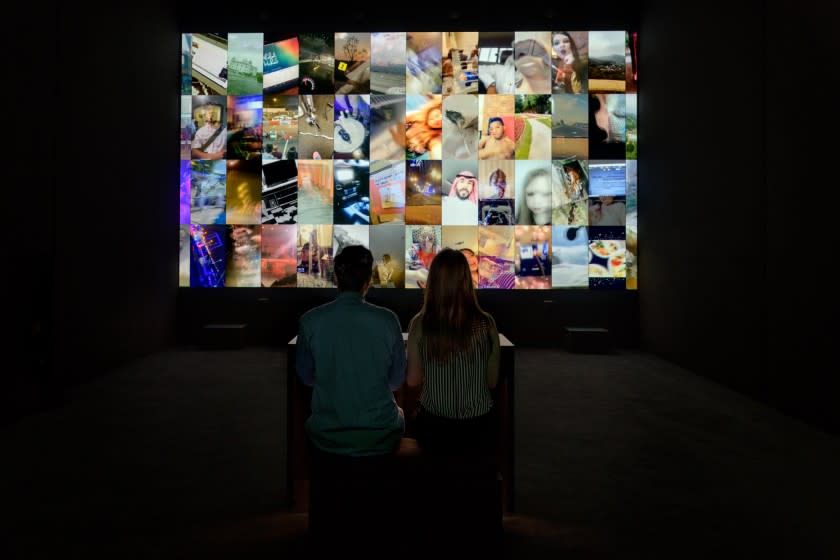LACMA turns to Snapchat again, this time for a virtual monuments project

The Los Angeles County Museum of Art is joining the national conversation about representation and historical accuracy in monuments, murals and other public works of art.
The museum announced a partnership on Tuesday with Snap Inc., Snapchat’s parent company, on the augmented reality project “LACMA x Snapchat: Monumental Perspectives.” The multiyear initiative will pair local artists chosen by LACMA with AR technology to create site-specific monuments and murals that can be seen on the Snapchat app.
The aim is to create works that “celebrate diverse histories in an effort to reflect richer and more inclusive perspectives from communities across the region,” the museum said in a Tuesday announcement.
Snap Inc., which is on LACMA’s Art + Technology Lab Advisory Board, financially supported “Monumental Perspectives,” although the museum would not disclose a dollar amount. Snap will help to develop the art and also will cross-promote the work.
“Monumental Perspectives” is not LACMA’s first collaboration with Snap. Last year the museum presented composer and multimedia artist Christian Marclay’s “Sound Stories,” for which the artist and Snap engineers mined Snapchat videos uploaded by the public to create at times playful, at times haunting or beautiful sonic installations.
The museum's partnership with a corporate media giant follows criticism of a different project that blurred the lines between art and commerce. LACMA’s current sculptural installation, “Farewell, Work Holiday Parties” by L.A. artist Alex Prager, was the brainchild of international ad agency Doyle Dane Bernbach and commissioned by Miller Lite beer. The installation is the centerpiece of a Miller Lite TV commercial and, as part of the larger campaign, the brewery offered rebates to customers who bought six-packs.
“A visitor to this tacky LACMA display will learn none of this, however,” Times art critic Christopher Knight wrote. “Bland text panels present the ad props as snazzy sculptures.”
The museum's contemporary art curator Rita Gonzalez, however, said in an interview that “art and tech at LACMA — which has a history going back to the late ‘60s, early '70s — was always all about finding ways to create synergy between artists and corporations. So there’s a history within the museum of looking to partner artists and scientists, artists and technologists, in this case its artists and the tech world.”
The Snap project will launch in 2021, and the works will be geolocated to points across the city including on LACMA’s campus and Earvin “Magic” Johnson Recreation Area in the South L.A. community of Willowbrook. Among the artists who will be working with Snap’s developers and creative technologists: Glenn Kaino, Mercedes Dorame, Ada Pinkston, I.R. Bach and Ruben Ochoa.
The site-specific works will give voice to communities whose perspectives have not been “foregrounded,” Gonzalez said.
“When we put the prompt out to a number of artists, what was fascinating was almost everyone wanted to respond to the erasure of some kind of history,” Gonzalez said. “The erasure of an Indigenous presence, the sort of daily erasure of immigrants’ contributions to culture. Also, [it's] responding to the lack of greenspace and the lack of contemplative spaces in working-class communities.”
One of the issues around public monuments is whether or not — and how — to replace works that may be offensive to some communities.
“Building new physical monuments takes a great deal of time, but the issues around monuments in America are urgent,” museum Director Michael Govan said in the announcement. “Utilizing Snap’s advanced augmented reality technology, artists and their virtual artworks mapped to specific places can inspire immediate conversations around real histories, real places, and visions of the future.”
The Andrew W. Mellon Foundation is providing additional funds toward future artists’ works as well as community engagement and other programming that will take place at each virtual artwork location.
This story originally appeared in Los Angeles Times.

